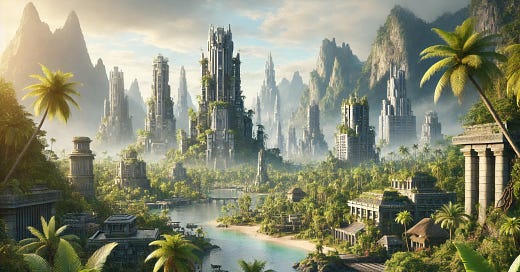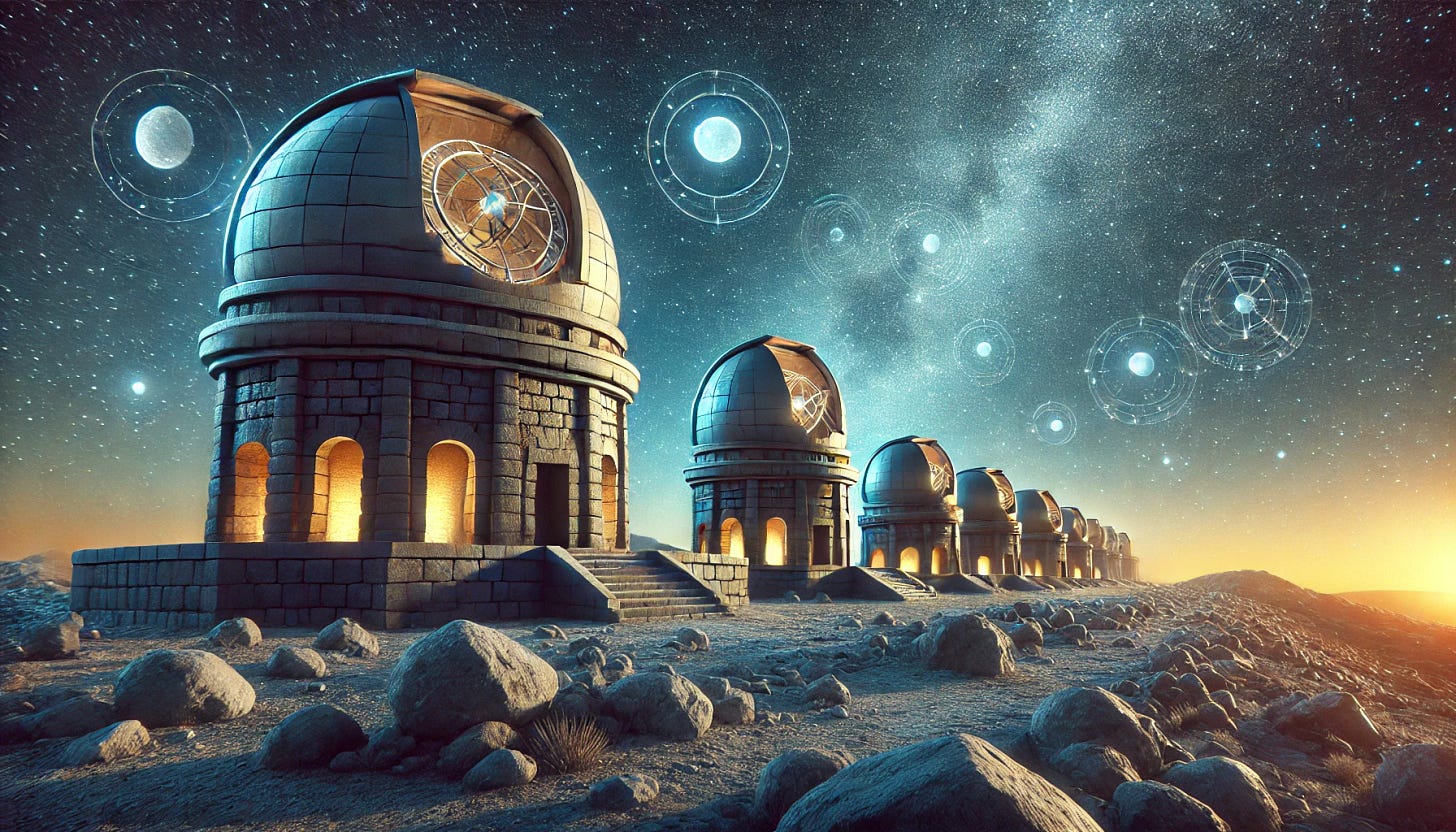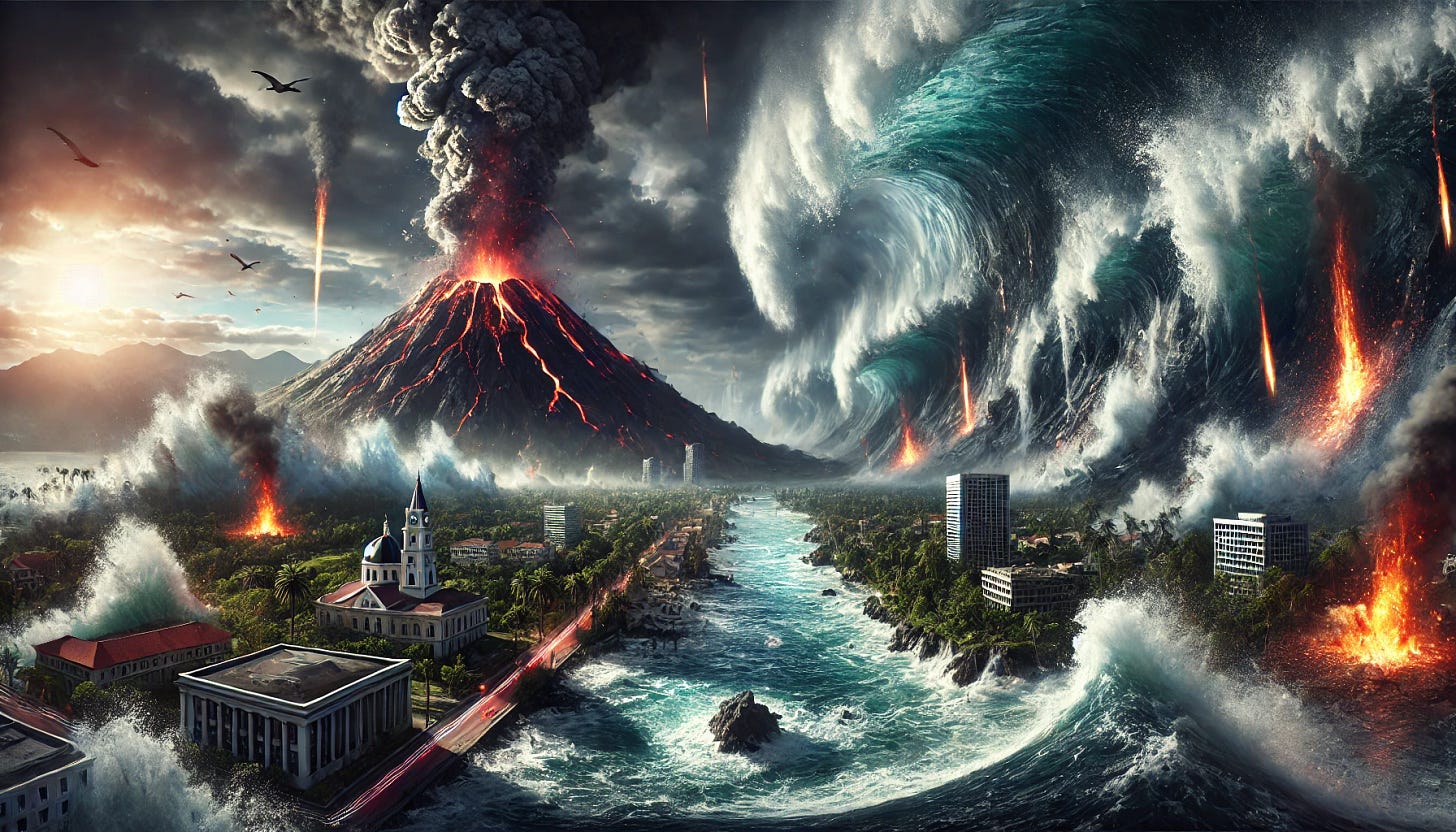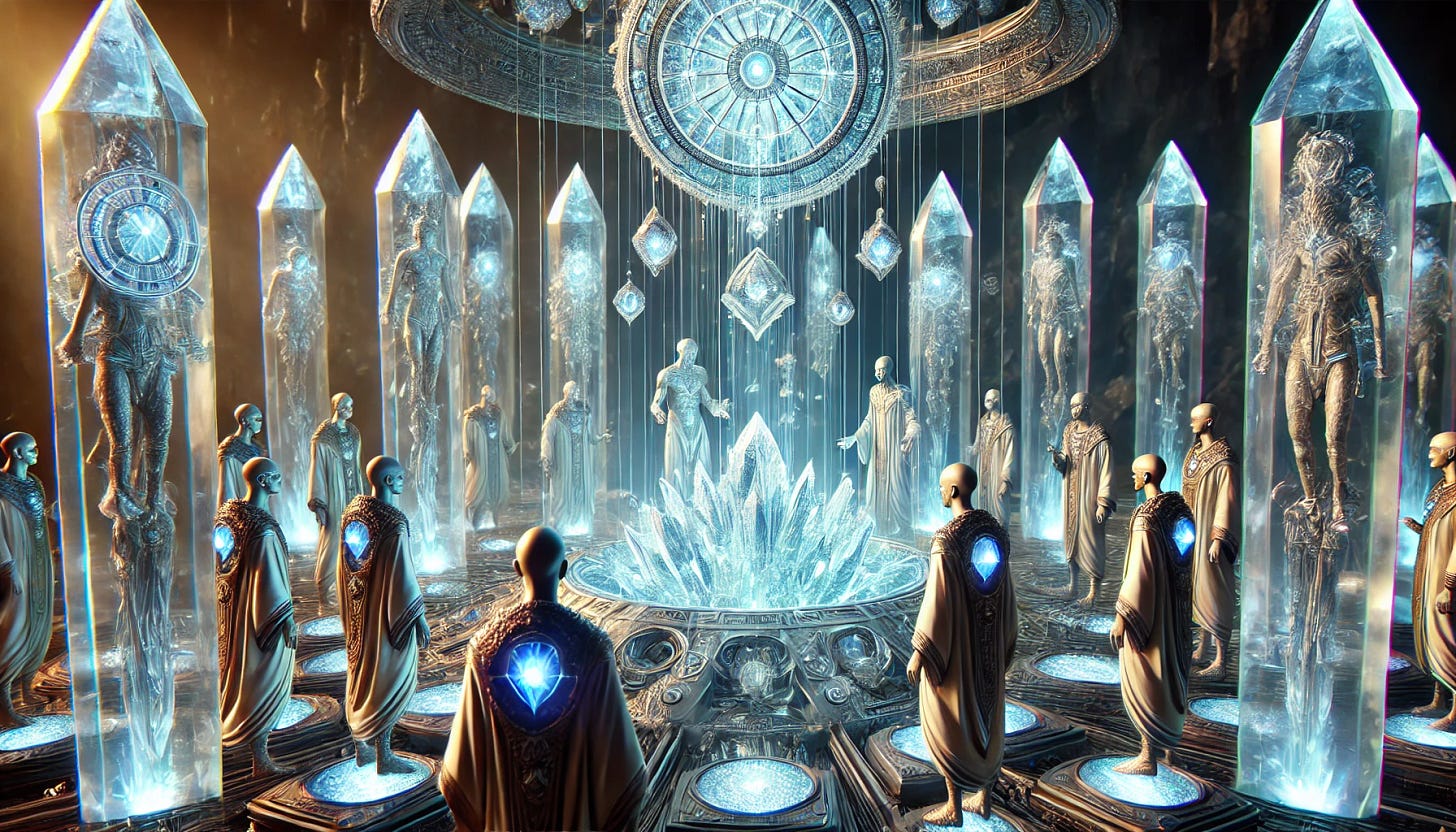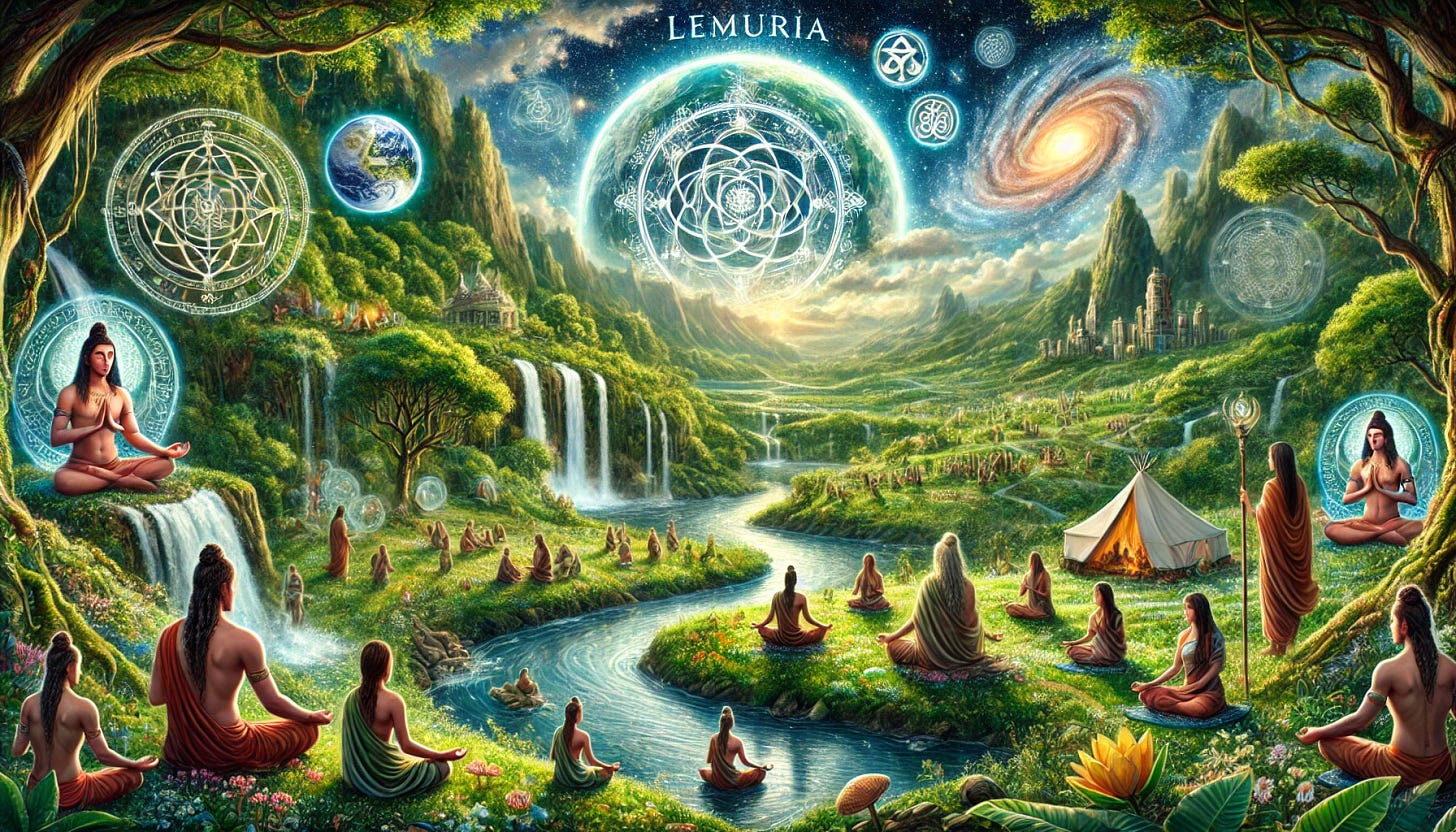Lemuria: The Lost Continent and Its Cosmic Legacy
Series 3: Mythical Lands and Celestial Mysteries // Episode 4
Long before Atlantis entered our collective imagination as a symbol of advanced civilisation and cataclysmic loss, there was Lemuria — a mysterious land believed to have vanished beneath the ocean’s depths. This lost continent has inspired generations of explorers, mystics, and storytellers.
Was it a real place, a symbolic representation of forgotten wisdom, or a product of human imagination?
In this episode, we delve into the myths, the theories, and the cosmic legacy that Lemuria left behind.
The Origins of Lemuria
The story of Lemuria begins not in myth but in science. In the mid-19th century, scientists proposed the existence of a massive landmass to explain the puzzling geographical distribution of lemurs in Madagascar, India, and beyond — an anomaly because these species were found so far apart without any apparent connection. Philip Sclater, a zoologist, coined the term “Lemuria” in 1864 to describe this hypothetical continent that might explain the movement of species across oceans.
Scientific Theory
Sclater observed that lemurs and other species were found in both Madagascar and India but were absent from Africa and the Middle East. To explain this anomaly, he theorised that a land bridge once connected these areas, which he called Lemuria.Controversy
At the time, plate tectonics and continental drift were not understood concepts, which led scientists to consider the possibility of lost continents to explain species distribution.
But while Lemuria began as a scientific theory, it was soon embraced by mystics and esoteric thinkers who saw in it something much more profound.
Scientific Beginnings
Lemuria was originally hypothesised as a way to explain biological mysteries.Mystical Evolution
The concept of Lemuria evolved into something much larger — a lost civilisation rich in cosmic knowledge and spiritual wisdom.
Was Lemuria Real?
There is no scientific evidence that a lost continent named Lemuria ever existed. However, this did not stop the imagination of mystics from embracing Lemuria as a symbol of human potential and spiritual connection.
Tectonic Shifts
Today, scientists understand plate tectonics, which makes the concept of a sunken continent like Lemuria unlikely. Instead, the separation of landmasses over millions of years explains the distribution of species that inspired Sclater’s theory.Continental Drift and Myths
The story of Lemuria persists because it resonates with a human desire to understand lost civilisations and the mysteries of our past. Many believe that there is a deep, almost instinctual need to connect with an ancient origin, and Lemuria fills that role for some people.
Lemurian Civilisation: A Paradise of Wisdom
A Society of Cosmic Connection
According to mystical traditions, Lemuria was home to an advanced civilisation, deeply connected to the cosmos. The Lemurians were believed to live in harmony with nature, mastering energies and cosmic truths long forgotten by modern humanity.
Deep Spiritual Connection
The Lemurians are said to have lived in a state of balance with the earth and the universe. Their lives were guided by principles of unity, peace, and a profound understanding of the natural world.Knowledge of Cosmic Truths
They were believed to possess profound insights into energy, consciousness, and the cosmos. These were not only spiritual truths but also practical knowledge about the workings of nature and the universe.
The Culture of Lemuria
Myths describe Lemuria as a peaceful paradise with communities focused on spiritual growth and the pursuit of wisdom.
Communal Living
Lemurians were thought to live communally, valuing empathy, compassion, and mutual respect. They had no rigid social hierarchies and lived in harmony, emphasising collective well-being over individual power or wealth.Crystals and Energies
Some esoteric traditions believe Lemurians used crystals as conduits for energy, tapping into cosmic frequencies for healing and enlightenment. Crystals were also said to hold information — like a cosmic library — waiting to be accessed by those capable of understanding their vibrations.Advanced Technology
Though their technology was different from ours, Lemurian technology was supposedly highly advanced. It was believed to be based on harnessing natural earth energies, much of it focused on healing, spiritual enhancement, and maintaining harmony with their environment.
The Fall of Lemuria
Like many lost civilisations, Lemuria was said to have faced a cataclysmic end.
Natural Cataclysms
Some myths speak of earthquakes, volcanic eruptions, or great floods that swallowed Lemuria into the ocean. For example, Tamil and Polynesian myths describe a vast landmass that was submerged by catastrophic floods, which some link to the legend of Lemuria. Geological instability supposedly led to the fragmentation of the continent and its eventual disappearance beneath the waves.Transition to Higher Realms
Other traditions suggest that the Lemurians transcended their physical existence, evolving spiritually to a higher plane before their land was lost. According to this belief, the physical destruction of Lemuria was not an end but a transformation, allowing the Lemurians to move beyond the limitations of the material world.
Lemuria and the Cosmic Legacy
Theosophy and the Lemurian Myth
Theosophists like Helena Blavatsky embraced Lemuria, weaving it into a larger story of human evolution. According to these teachings, Lemurians were the ancestors of one of the early Root Races, possessing spiritual knowledge that influenced later human development.
Theosophical Influence
Theosophy brought Lemuria into the broader discourse of esoteric teachings, suggesting that Lemuria was part of a cosmic plan for human spiritual evolution. Blavatsky wrote that Lemurians were the third Root Race, beings who were more ethereal and less material than modern humans, eventually evolving into more corporeal forms.Atlantean Connection
According to Theosophists, Lemuria preceded Atlantis, and Lemurians laid the foundations for the mystical traditions that would later flourish in Atlantis. The destruction of Lemuria paved the way for the rise of Atlantis, passing along spiritual wisdom that would shape the Atlanteans’ advanced society.
Lemurian Seed Crystals
In modern spiritual circles, Lemurian Seed Crystals have become popular as symbols of this lost knowledge.
Encoded Wisdom
Believers claim these crystals are encoded with ancient Lemurian wisdom, waiting to be unlocked. According to legend, the Lemurians purposely programmed these crystals before their civilisation fell, leaving behind a legacy for future generations to discover.Connection to Higher Energies
These crystals are said to help users connect with higher realms and channel the energy of the Lemurian civilisation. Practitioners use them during meditation or healing practices to access the compassionate and harmonious energy of the Lemurian people.
Lemuria in Popular Culture
The myth of Lemuria has spread beyond esoteric traditions into popular culture, inspiring books, movies, and new-age philosophies. Works like James Churchward’s The Lost Continent of Mu and movies referencing mystical lands have kept the allure of Lemuria alive in the modern imagination.
Fantasy and Fiction
Authors have woven Lemuria into their works as an exotic and mystical land, often portraying it as a utopian civilisation filled with otherworldly beings. H.P. Lovecraft, for example, mentioned Lemuria in his mythos, adding to the allure of the lost continent as a place of mystery and ancient power.New Age Movements
Lemuria has become a symbol of spiritual awakening, a call to reconnect with ancient wisdom and embrace the values of compassion, interconnectedness, and cosmic harmony. It represents a longing for a time when human beings lived in sync with the earth and the cosmos.
A Symbol of Hope
To many, Lemuria represents more than a lost continent — it symbolises a golden age where humanity lived in balance with nature and the cosmos. It stands as a reminder of what humanity could achieve if we chose harmony over conflict and knowledge over ignorance.
Conclusion
Whether Lemuria was a physical place or a mythical symbol, its story resonates across generations. It speaks to our longing for a lost golden age — a time when humanity was deeply connected to the universe and each other.
The cosmic legacy of Lemuria inspires us to look inward, to reconnect with the wisdom that lies within us all, and to dream of a future where we, too, live in harmony with our world.
Questions for Reflection
Do you believe that Lemuria could have been a real place, or is it simply a mythical story?
What aspects of Lemurian society resonate most with you?
Can Lemuria’s cosmic legacy inspire us to create a better future today?
We would love to hear your thoughts and reflections on Lemuria.
Join the conversation and share what this lost continent means to you!
Coming Next: Thule: Gateway to Other Realms or Nazi Myth?
Thule — a name that evokes both the mystique of ancient northern lands and the dark shadow of Nazi ideology. Believed to be the gateway to mystical realms by some, and appropriated by the Nazis as a symbol of their twisted mythology, Thule's story is complex and enigmatic.
In this episode, we unravel the layers of myth, mystery, and manipulation surrounding Thule.

